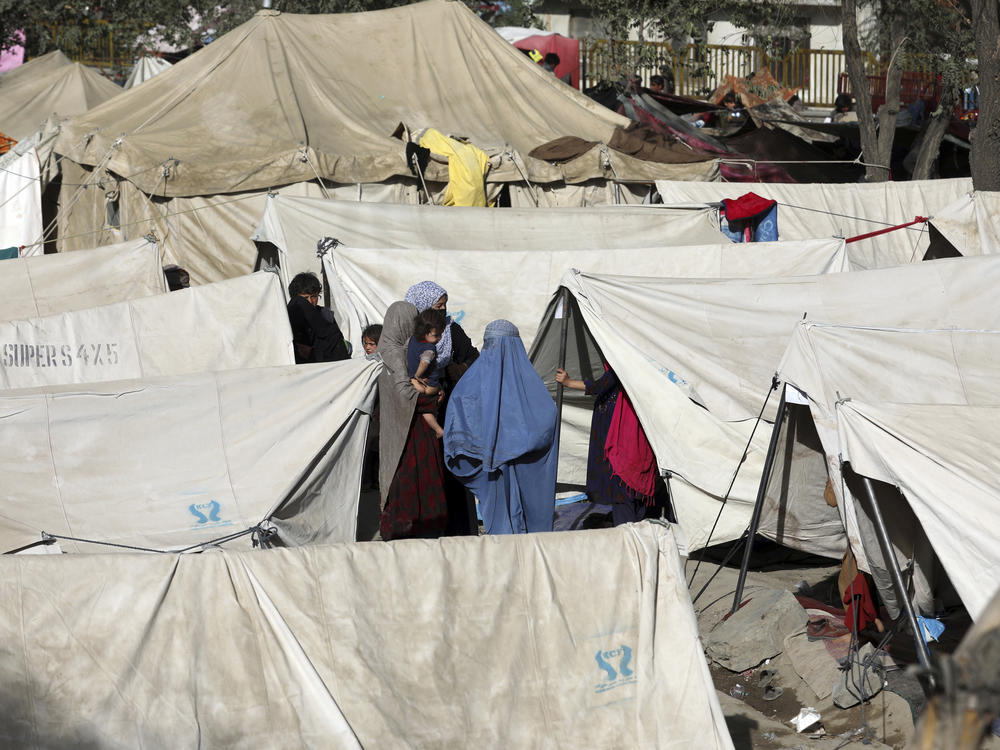Section Branding
Header Content
A Quarter-Million People Have Fled Their Homes As Violence In Afghanistan Escalates
Primary Content
As violence intensifies in Afghanistan, United Nations leaders are warning of a massive humanitarian crisis in the country that is having a devastating impact on civilians, particularly women and children.
Since May, nearly 250,000 people have been forced from their homes; 80% of them are women and children, said Shabia Mantoo, a spokesperson for the U.N. refugee agency.
The conflict "has accelerated much faster than we all anticipated and the situation has all the hallmarks of a humanitarian catastrophe," World Food Programme spokesperson Tomson Phiri said.
One in two children under age 5 in the country are suffering from severe acute malnutrition, said Mustapha Ben Messaoud, chief of field operations for UNICEF.
And with the COVID-19 pandemic still surging, U.N. officials also report seeing 100 deaths per day and 2,000 new positive cases of the coronavirus per day.
A report released last month from the United Nations also showed an increase in women and children killed and injured in May and June, which coincides with U.S. and other international troops starting to depart the region.
Without a de-escalation of violence, Mantoo said, Afghanistan is on track to have the highest number of documented civilian casualties in a single year since the U.N. began keeping records in 2009.
Just weeks before U.S. troops are scheduled to leave Afghanistan, the Taliban captured three more provincial capitals Friday and are encroaching on Kabul, the country's capital.
Reports say the Taliban — which already control an estimated two-thirds of Afghanistan — could take Kabul within 30 days and could gain control of the entire country within a few months.
Copyright 2021 NPR. To see more, visit https://www.npr.org.

